Candid photography is a style of portrait photography that captures real emotions and spontaneous moments. It’s unobtrusive portrait photography that captures people in their natural state without them being aware of the camera.
It may sound easy, but good candid photography takes skill and practice to capture the perfect moment.
Understanding what is candid photography
The most important thing to remember with candid photography is that an unplanned moment takes planning to capture well.
What does candid mean in photography?
Candid photography captures unposed moments with real emotions that are genuine. These moments can be anything from a smile to a tear, or any expression that reflects a person’s true emotions
Candid photos are images of people in their natural state, without posing or direction from the photographer. Because candid images aren’t staged or posed they feel natural and authentic, so candid photography has a unique feel.
Candid photography captures unplanned moments. Because spontaneous moments can happen at any time, candid photographers always need to be ready to capture them. In fact, skilled candid photographers can often judge when a special moment is about to happen, so they’re ready for it.

I set up a tea party portrait shoot and photographed from a distance with a long focal length for candid shots so that the children wouldn’t be distracted by my presence. While the scene was a set up, the reactions of the girls was entirely natural and they were so engrossed with the table party that they completely forgot about me instantly.
Camera settings: 1/320, F4, ISO 400. Focal length: 122mm
Candid vs traditional photography styles
The two main approaches to portrait photography are: candid and traditional.
The main difference between candid and traditional portrait photography is the level of control the photographer has over the subject and the environment. While traditional photography is more structured and planned, candid photography is more spontaneous and natural.
Differences between traditional and candid portrait photography
1. Posed vs unposed photos
- A traditional photographer directs the subject to pose in a specific way.
- In candid photography, the subject isn’t posed, so the photographer captures the subject’s natural movements and expressions.
2. Controlled vs uncontrolled environment
- Traditional photography takes place in a controlled environment, such as a studio, where the photographer can control the lighting, props and background.
- Candid photography takes place in an uncontrolled environment, such as at a wedding, event or in the street. A candid photographer works with the available lighting and surroundings.
3. Artificial vs natural lighting
- Traditional portrait photography often involves artificial lighting, like flash or continuous LED lighting, even for outdoor portraits.
- Candid photography relies on the ambient light of the environment, which could be natural light if outdoors or halogen or tungsten light if indoors.
4. Staged vs spontaneous moments
- Traditional photography is staged, with the photographer and subject working together to create a specific image.
- Candid photography is spontaneous, with the photographer capturing moments as they happen.
However, with the rise of “influencers” we’ve all become very familiar with “fake candid” photography. It’s all over Instagram and is where the subject poses as if they’re in a candid moment for a candid feel, but the image is staged. It’s a posed photo.
5. Formal vs informal portrait photography
- Traditional portrait photography often feels formal, with the subject dressed up and posed for the images even if they’re dressed casually.
- Candid portrait photography feels informal, regardless of what the subject’s wearing, because they’re captured in natural, relaxed, unposed poses.

I captured this unposed moment during an at home lifestyle family portrait session where I just hung out with the family in their yard and photographed them individually and together interacting naturally
Camera settings: 1/500, F4, ISO 400. Focal length: 70mm
Equipment for candid photography
To capture stunning candid photographs, it helps to have certain types of photography equipment, aside from your camera of course.
Speaking of which film, DSLR and mirrorless cameras are all equally good for candid portraits. Although the advantage of DSLR cameras and mirrorless cameras is that many have flip screens, which helps to photograph unobtrusively and from lower angles.
However, with that said, it doesn’t mean that you have to have specific gear to get the shots, only that it’s easier when you have the right gear for your photography style and preferences.
You can do a lot more with great knowledge than great gear.
1. Telephoto lens
Depending on the situation, a telephoto lens is ideal for candid photography. Using a long lens allows you to capture candid portraits from a distance without disturbing your subject. Plus, using a long focal length helps you to create a blurry background in portraits.
A 200mm lens is a good choice for this type of photography.
2. Prime lenses
Prime lenses are ideal for candid photography as they’re usually smaller, lighter and faster than zoom lenses. They’re great for really wide apertures, so you can separate the subject from the background and capture sharp images in low light conditions.
Depending on how close you are to the action and how much of the background you want to include in the image for context, a 50mm, 85mm or 105mm prime lens are all great choices for candid portraits.
My prime lens preference for portrait photography is a focal length of 105mm and longer.
3. Zoom lenses
Zoom lenses are versatile and ideal for candid portraits, because you can change the focal length quickly to adjust your framing to capture a candid moment. Speed is often essential to capture the perfect moment.
A 70-200mm F2.8 lens is a popular choice for candid photography, and my favorite zoom lens. If possible, I suggest investing in a fast telephoto zoom so that you can use wide apertures and fast shutter speeds to photograph in low light. I consider this and a 24-70mm F2.8 zoom lens essential gear for professional photographers.
If you have to make a choice, invest in good lenses rather than a high end camera.
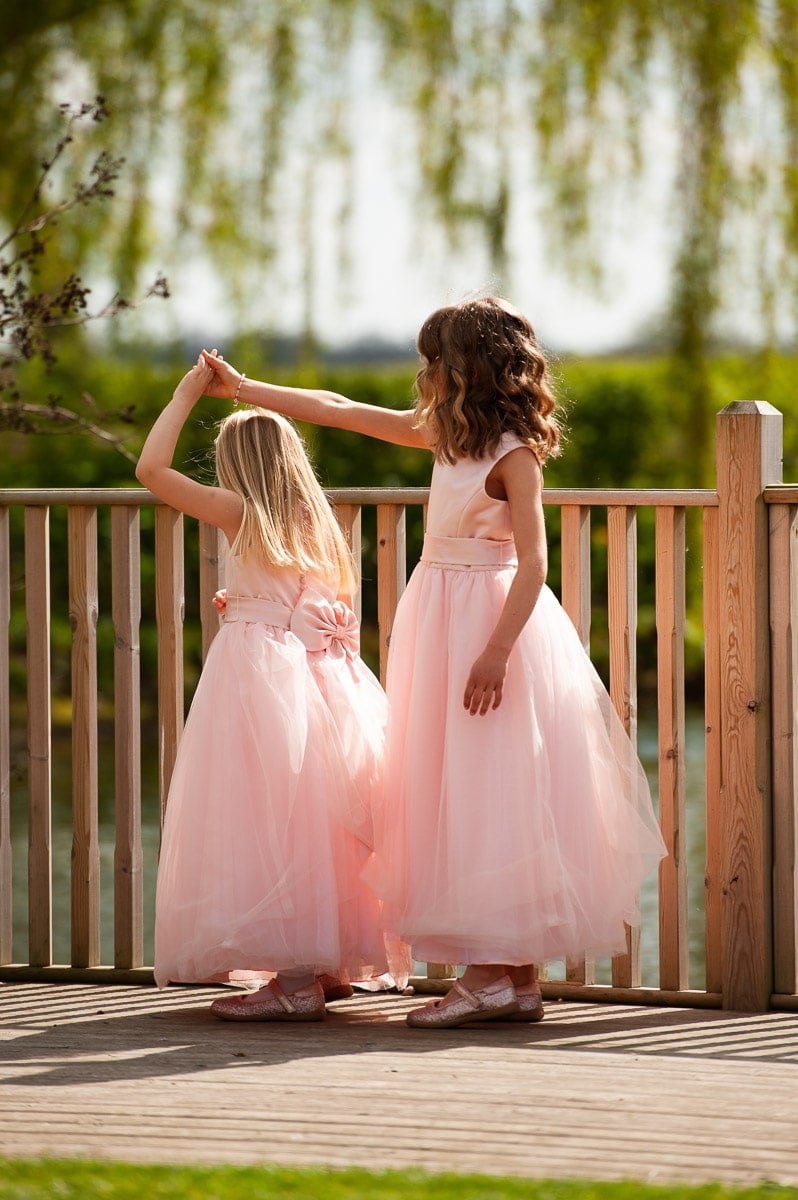
Candidly photographing guests at a wedding is my favorite part of a wedding, because I can capture raw emotion and people behaving naturally in a beautiful setting. I noticed the flower girls playing and set up in the perfect spot to capture spontaneous shots.
Camera settings: 1/2000, F4, ISO 200. Focal length: 200mm
Camera settings for candid photography
Using the right camera settings for the scene and lighting conditions is much more important than photography equipment.
Your choice of camera settings depends on how much light is available, the look you want to create and what you’re photographing. For example, do you want a blurry background or front to back sharpness?
1. Aperture
To isolate your subject and make them stand out as the main focal point of the image, use a wide aperture (low f-stop number) to create a shallow depth of field and blur the background. This is the most popular option in portrait photography. With a lot of light entering the lens you can set a faster shutter speed, which is an advantage in candid photography.
However, if you want to capture detail in the background as well, use a narrow aperture (high f-stop number).
2. Shutter speed
Because you don’t know what a subject will do next, use a fast shutter speed to freeze motion and avoid camera shake for sharp images. I recommend a minimum shutter speed of 1/250th if possible, especially if your subject is moving.
Children and pets in particular need a fast shutter speed.
3. ISO
Set ISO to the lowest possible setting to prevent noise in images, particularly in low light situations. You could also consider using auto ISO if you’re in a fast moving situation and:
- Don’t have time to adjust aperture or shutter speed
- Or you don’t want to adjust either as they’re ideal for the the image you want to capture
4. Continuous mode
Burst mode, also known as continuous shooting mode, is a great way to capture multiple shots in quick succession as it increases your chances of getting the perfect shot. However, it also increases editing time as you’ll have significantly more images to cull than if you don’t use burst mode.
Make sure, with either continuous low or continuous high, that you have ample memory cards with ample space on them to accommodate all the images.
I prefer to try to get the timing right so I don’t fill up my memory card with a gajillion similar images.
5. Autofocus focus area
I suggest using single point autofocus for almost all portrait photography with a DSLR camera, because the most important part of a portrait is the subject’s eyes. So it’s essential that the eyes are sharp. As eyes make up a small part of an image, single point autofocus is ideal. Simply focus on the eye closest to camera.
With mirrorless cameras it’s easier as you can set it to detect and focus on eyes automatically.
6. Autofocus mode
Because candid photography required you to be constantly prepared, your camera needs to be ready at any moment to take a shot. So the best autofocus mode to use is continuous autofocus so that the camera constantly focuses the whole time you keep the shutter button part depressed.
Nikon and Sony call continuous autofocus AF-C, but on a Canon it’s AI-servo.
7. Back button focus (for DSLR camera photographers)
Separate the shutter function from the focus function by setting up back button focus on your DSLR, combined with the above three camera settings – continuous shooting mode, single point autofocus and continuous autofocus.
It sounds complicated, but it isn’t and you’ll never look back once you get used to it, because you’ll capture a lot more in-focus images, especially of moving subjects.
2. Shooting mode
Photographing in manual mode gives you complete control over your camera settings, allowing you to adjust the aperture, shutter speed, and ISO to suit your needs. However, there are times when aperture priority mode or shutter priority mode could be more useful in a fast moving situation.
Get comfortable with all three shooting modes so you’re in the best position to capture any candid moment.

Another example of candid photography at a wedding. I looked for where the groom was greeting guests as they arrived and positioned myself with a good view of potential social interactions in front of a good background
Camera settings: 1/1600, F4, ISO 200. Focal length: 175mm
Candid photography techniques
To capture stunning candid portraits, you need to more than just camera techniques. So, here are three candid photography tips to help you take better candid shots:
1. Wait for the right moment
Patience is key and timing is everything in candid photography. Wait for the right moment to unfold when your subject is relaxed and not aware of the camera and everything comes together for the perfect shot.
Top tip: So that I don’t miss the action, while my right eye looks down the lens, I keep an eye on the whole scene with my left eye so that I can see everything, not just the view through my lens.
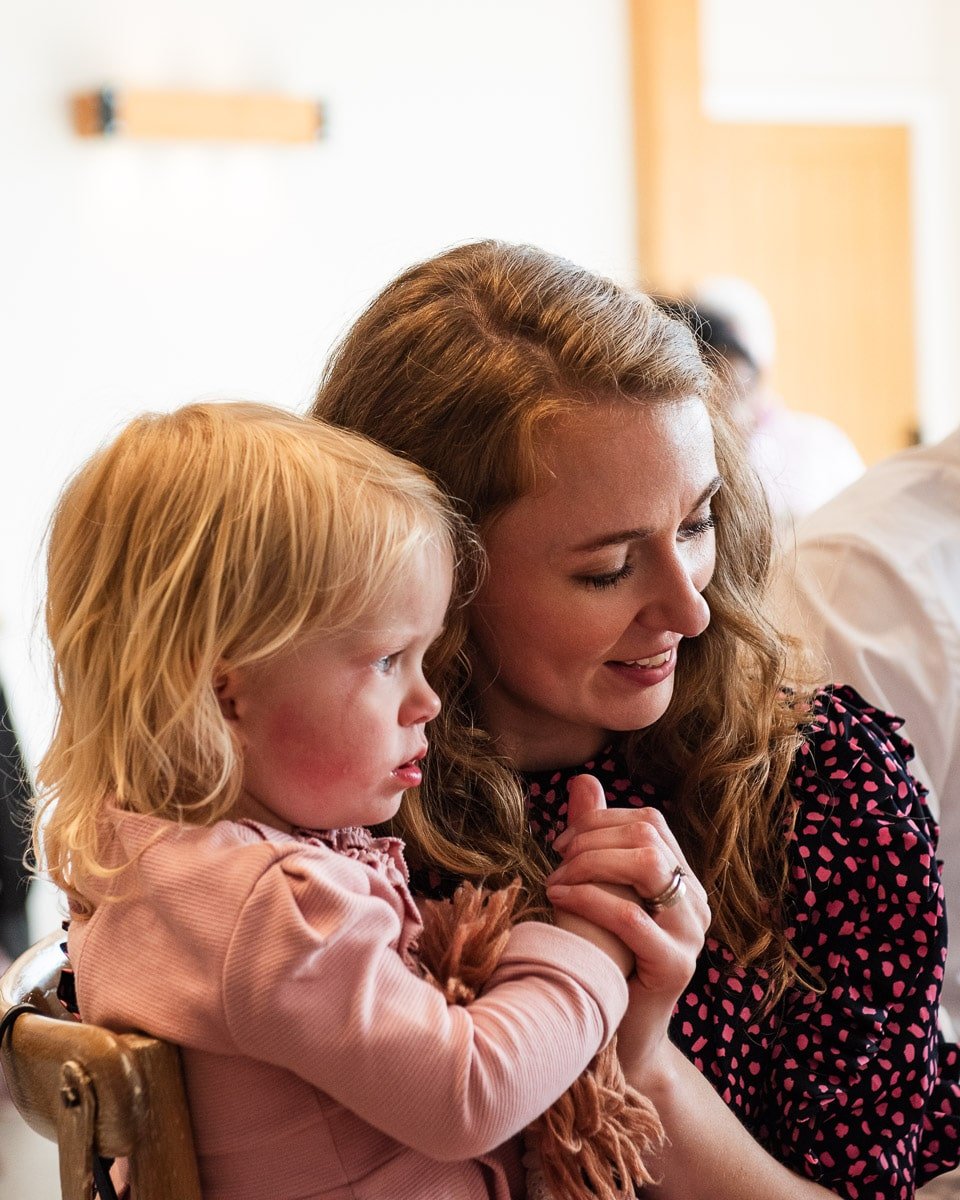
Some of the best moments at weddings are between family members, as with this candid photo of mother and daughter
Camera settings: 1/320, F4, ISO 800. Focal length: 70mm
2. Use different camera angles
Try photographing from different camera angles to add variety to your shots and to avoid a cluttered background. This could be a:
- Low angle
- High angle
- Side angle
- Front angle
- Back angle
Basically, think 360 degrees and move around to find the best angles.
3. Composition techniques for candid images
Good composition is essential for engaging photos. Develop your photography composition skills gradually so that you don’t get overwhelmed. Start with these three, then learn a few more:
- Rule of thirds – where to place your subject in the scene
- Leading lines – how to direct the viewer’s attention to the subject
- Framing – how to make the subject obvious in photos
Candid photography tips for different settings
The candid photography style captures natural and authentic moments, regardless of the genre of photography.
Although each genre varies slightly, candid techniques apply to photographing a:
- Portrait session
- Wedding, party or corporate event
- Street scene

For candid family portraits, I give the family something to do so that when they’re interacting naturally I’m able to capture them in a natural way
Camera settings: 1/100, F6.3, ISO 800. Focal length: 38mm
1. Candid portrait sessions
Lifestyle photography for families and couples is a form of candid portrait photography.
The advantage of these portrait sessions is that they capture people in natural and authentic moments. Unposed photos of people laughing and interacting with each are more interesting and engaging than posed photos. They also show the connection between the subjects.
What’s more, the candid style of photography is great for camera-shy family members as they’ll feel more comfortable and relaxed than in a formal portrait session.
Tips for capturing candid portraits
- Give your subjects something to do or talk about to create natural moments to capture
- Be prepared between activities to capture unguarded moments
- Remember to capture individuals as well as group photos of families and couples
- Use a shallow depth of field to blur the background and draw attention to your subject/s
Even in my formal portrait sessions I try to make my subject laugh so that I can get a few images with natural emotion and more relaxed poses.
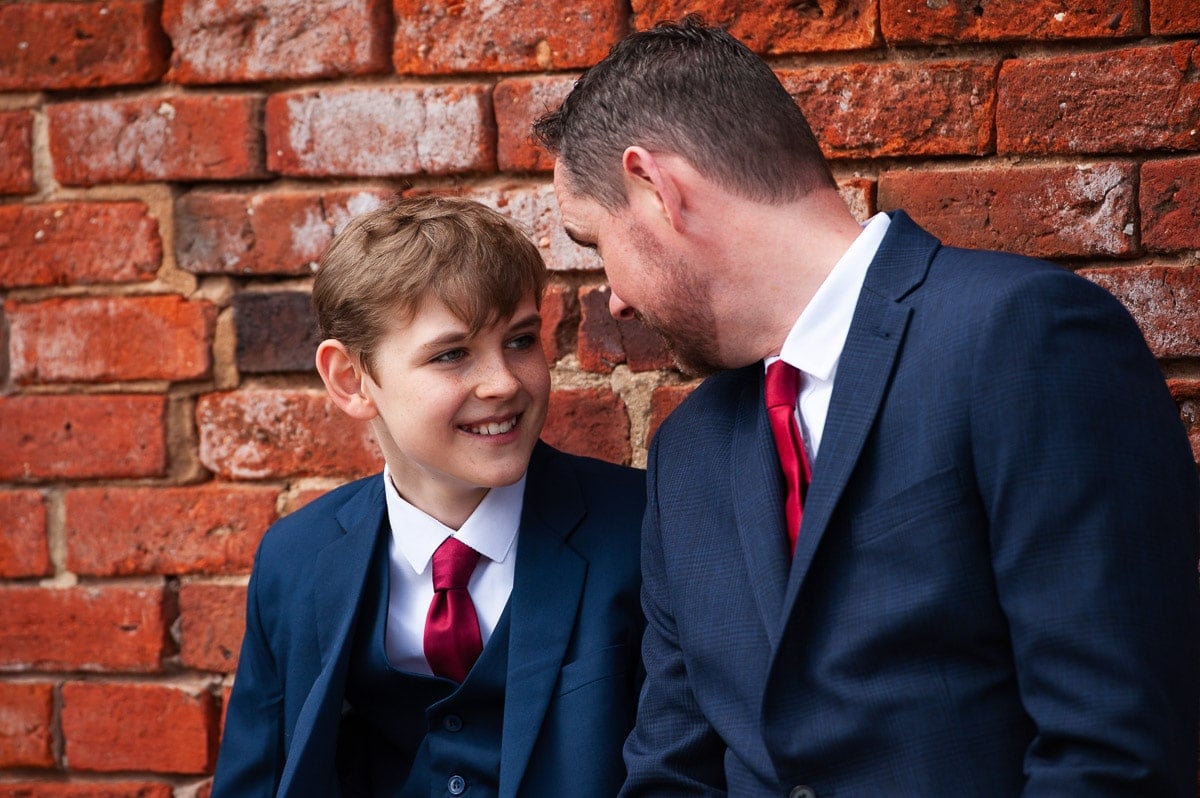
I was able to capture this father and son moment at a wedding just before they became aware of my presence
Camera settings: 1/1600, F4, ISO 200. Focal length: 190mm
2. Candid wedding photography
Candid wedding photography is very popular as couples want to capture the real emotions and moments of their special day in a way that tells a story. In my opinion, it’s also a much more interesting way to photograph weddings.
Candid pictures of the joy, laughter, and tears that make a wedding day special are much more engaging than formal wedding photos.
Tips for candid wedding photography
- Be discreet and unobtrusive to avoid distracting the couple or guests so that you can capture them interacting
- Use a telephoto lens to capture candid shots from a distance
- Look for emotional moments and capture them quickly before they disappear
- Don’t photograph people eating – it’s never a good look
While party and event photographers don’t have the pressure of capturing a wedding ceremony, they use candid photography in a similar way for photos of attendees.
With these types of photography be prepared to move quickly and capture the moment as it happens. Key moments in a wedding when you have to pay attention to guests as well as the bride and groom are:
- During the ceremony when guests are asked if anyone objects – there’s a good chance you’ll capture laughs in response to a nervous comment from the couple
- The confetti throw and post ceremony gathering
- During speeches
- On the dance floor

I prefer subjects in street photography to be anonymous, except for when capturing a festival scene where everyone is having a good time and taking photos. In these situations there’s an understanding that photos will be posted to social media and people are happy to be photographed
Camera settings: 1/250, F8, ISO 320. Focal length: 40mm
3. Candid street photography
Street photographers use candid photography to capture people going about their daily lives, enjoying outdoor events and to capture the essence of a place.
Tips for capturing candid street scenes and public spaces
- Be aware of your surroundings and look for interesting moments
- Respect people’s privacy in ordinary daily life and avoid taking photos where the person is easily identifiable, especially if you intend to post the images on social media
- Look for interesting characters or moments that capture the mood of the place
- Being in the right place at the right time is crucial for candid street photography. Scout out locations to find the best spots for candid photos and wait for the decisive moment
- Be discreet and avoid drawing attention to yourself – wear dark clothes
- Use a small, discreet camera and/or smaller lens to avoid drawing attention to the camera’s presence
Challenges and solutions in candid photography
Good candid photography takes planning to capture a natural moment. Challenges candid photographers need to plan for include distracting elements, low light conditions and local laws.
1. Distracting elements
While layering is a great composition technique, be careful not to include ugly or distracting foreground elements or background elements in photos. Position yourself to minimize distractions in both the foreground and background. These include:
- Bright areas that will draw attention away from the subject
- Warm colors that will demand attention from the viewer’s eye
- Litter
2. Low light conditions
Candid photos in low light conditions, such as indoors or at sunset, risk:
- Underexposure
- Movement blur
- And/or camera shake
Use a fast lens with a wide aperture, possibly also increase your ISO, so you can use a high enough shutter speed for sharp photos. In low light it might help to switch to live view for better focusing.
3. Local laws
Be aware of local laws regarding photography in public places. Some areas require permits for photography or even prohibit photography altogether. Different countries have different views on photographing in public places.
Summary of how to take great candid shots
Capturing real moments is a great way to get natural expressions and candid poses of people. However, great photos take more than simply getting the exposure and focus right.
Tips and tricks for great candid photos
- Try to blend in with the crowd
- Be patient and observant
- Keep your camera ready and watch body language for interesting and important moments to capture
- Use a long lens so you can capture candid moments from a distance or get closer and use a wide-angle lens to capture context
- Try to capture special moments, such as a child’s smile or a couple’s embrace
- Be aware of your surroundings and the direction of light for flattering candid portraits
- If you take multiple shots to capture the exact moment you want, be aware that if you take too many you’ll spend a lot of time culling photos
- Use a fast shutter speed to freeze action and prevent blurry photos
- Use different angles for interesting candid pictures and to avoid distracting elements
For great candid moments, you need to learn your camera basics so that you can act without thinking to ensure you capture the moment before it passes.
Leave a comment
If you have any questions about what is candid photography, let us know in the comments.
Also, I love good news, so if my candid photography tips have helped you understand how to take great candid photos, share that too.
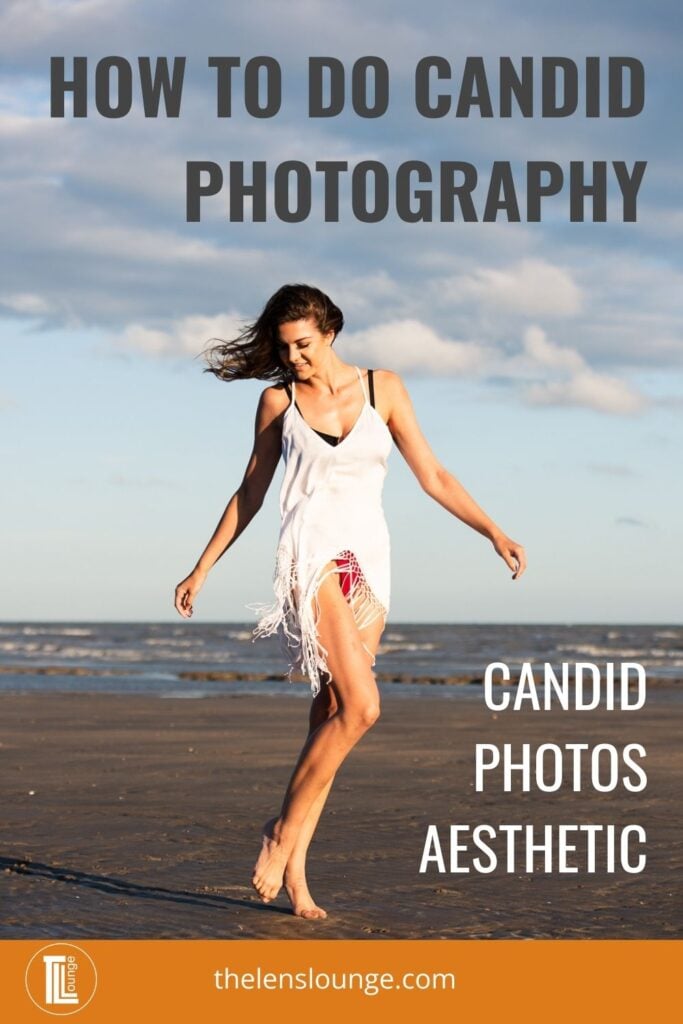
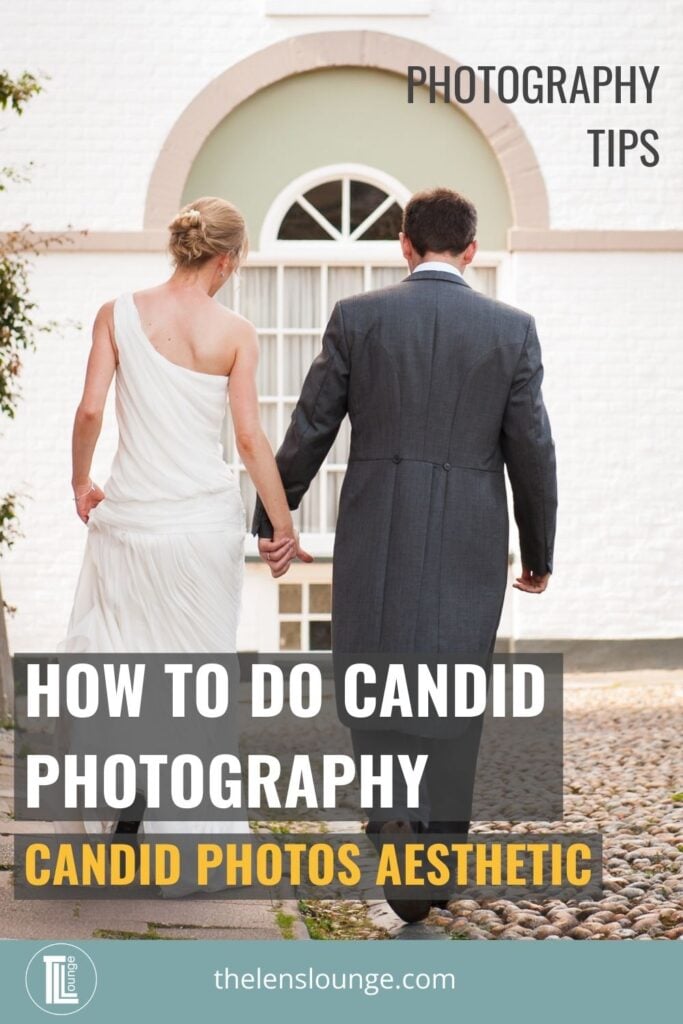
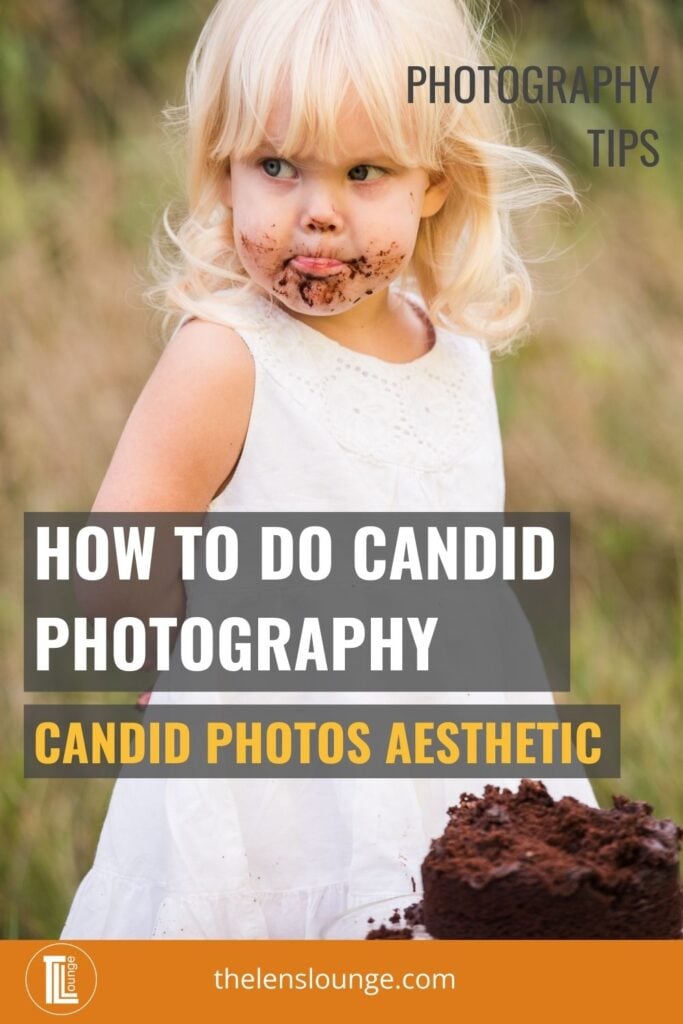

This is so helpful Jane! Would love to see a “cheat sheet” for candids too
Hi Jane – thankyou for all your tips and suggestions regarding taking candid photos. You have a great way of making it sound “do-able” and worth stepping out of one’s comfort zone and giving it a go….